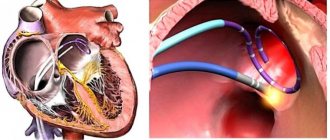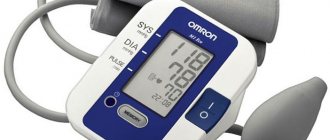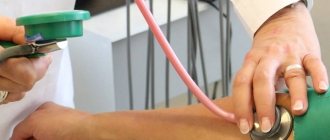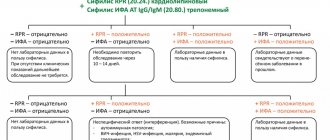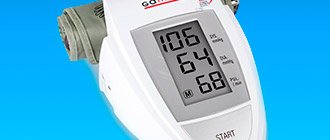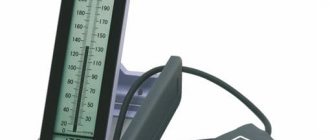Introduction
Arterial hypertension has an extremely high prevalence not only in Russia, but also in the world and is one of the most important factors in the development of cardiovascular diseases and complications, such as myocardial infarction, stroke, coronary heart disease, chronic heart failure, cerebrovascular (ischemic or hemorrhagic stroke , transient ischemic attack) and renal (chronic kidney disease) diseases [1].
The prevalence of hypertension increases with age, reaching 60% or higher in people over 60 years of age [2]. Because the observed increase in life expectancy is accompanied by an aging population and a corresponding increase in the number of sedentary and overweight patients, the prevalence of hypertension is predicted to increase worldwide. According to the forecast, by 2025 the number of patients with hypertension will increase by 15–20% and reach almost 1.5 billion [3].
There are types of office blood pressure measurements:
Measurements in clinical trials. Such measurements are always carefully standardized and follow a protocol. Recently, they have been performed mainly with electronic devices.
Measurements in real clinical practice. Without strict adherence to measurement conditions, rest duration, patient position, number of measurements, averaging method, etc. Overestimated compared to point 1 by an average of 14/10 mm Hg. Art., however, this difference is approximate due to the lack of standardization of methodology [4].
Automatic office pressure measurement. On average, below point 1 by 5/5 mmHg. Art. and approximately corresponds to the daily values of 24-hour blood pressure monitoring. Eliminates many of the limitations of office measurements, but requires additional material resources and is not readily available [5].
Arterial hypertension is the most important risk factor for atrial fibrillation (AF), the most common stable cardiac arrhythmia, often leading to serious consequences and causing premature death in patients with this pathology. The RACE and AFFIRM studies found that the combination of AF with hypertension sharply increases the risk of thromboembolic complications, including stroke, despite anticoagulant therapy [6, 7]. Currently, hypertension is considered as a determining, independent, potentially reversible risk factor for the development of AF. The role of hypertension in the development of AF has been confirmed in several large clinical studies: STOP-2, CAPPP, LIFE [8–10]. That is why it is so important to diagnose an increase in blood pressure in a timely manner, which requires devices characterized by the greatest sensitivity and accuracy of measurements. Measuring blood pressure in patients with AF is difficult due to the high variability of indicators. To obtain a representative mean value, blood pressure should be measured as often as possible. Each measurement should be repeated at least 3 times in a row [11], since blood pressure variability in patients with AF is significantly higher than in patients with sinus rhythm.
Purpose of the study:
to identify indications for the use of different types of tonometers in patients with AF: mechanical type, automatic type with an arrhythmia indicator with cuffs on the shoulder and automatic type with an arrhythmia indicator with cuffs on the forearm.
How to choose the right tonometer
Details you need to pay attention to when purchasing a tonometer:
- It is very important to choose the correct cuff size. Ask your doctor, nurse, or pharmacist what size cuff you need based on your arm size. Your blood pressure readings may be incorrect if your cuff size does not match your arm size.
- The numbers (measurement results) should be easy to read on the display. You should be able to see them clearly.
- If you are using a stethoscope, you should be able to hear sounds through it.
- Price is also an important factor. Since now the prices of different models of tonometers vary greatly, you have the opportunity to take a closer look at their prices and quality, and, by comparing all this, make the right choice. The most expensive models and the accuracy of their measurements may not be better than cheaper ones.
How can I make sure that my blood pressure monitor is accurate and that I am using it correctly?
Once you buy a blood pressure monitor, take it to your doctor to check how accurate the measurements are. You should check your blood pressure monitor once a year. Careful use and storage are also necessary. Make sure that the screw valve on the bulb is closed at the time of purchase, and keep it (the bulb) away from fire and hot objects. Check the pear periodically for cracks and holes.
Ask your doctor or nurse to teach you how to use the blood pressure monitor correctly. Using a blood pressure monitor correctly will help you and your doctor achieve good results and monitor your blood pressure regularly.
Understanding medical terms.
- Blood pressure is the force with which blood presses on blood vessels.
- Hypertension is an increase in maximum blood pressure above 130 mmHg. Art.
- The brachial artery is a blood vessel that runs from the shoulder to the elbow. You measure the blood pressure in this artery.
- Systolic pressure is the maximum pressure observed during systole, the moment when blood from the heart is ejected into the aorta.
- Diastolic pressure is the minimum pressure observed during diastole, when the heart “rests”.
- Normal values exist for both systolic and diastolic pressures. Normal blood pressure is 120/80, where the first number is the systolic pressure and the second is the diastolic pressure.
Material and methods
The study was conducted from January to March 2021 by employees of the Department of Therapy, Clinical Pharmacology and Emergency Medical Care of the Federal State Budgetary Educational Institution of Higher Education MGMSU named after. A.I. Evdokimov Ministry of Health of Russia on the basis of the multidisciplinary hospital of the City Clinical Hospital named after. S.I. Spasokukotsky. The study included patients over 18 years of age with AF of any etiology, paroxysmal form, no more than 1 month old, as well as with a permanent form of AF (tachysystolic form), who consented to be included in the study. All patients had a history of hypertension of varying severity. The maximum duration of the study for each patient was 1 day. The exclusion criterion was the patient's refusal to participate in the study.
The study included 202 patients, of which 122 were women. The average age of the subjects was 61.8±1.3 years. Patients were divided into groups depending on the department where they were at the time of blood pressure measurement. In each group, sequential comparisons were made of data obtained by measuring with a mechanical tonometer and automatic blood pressure monitors with an arm cuff, as well as with a mechanical tonometer and automatic blood pressure monitors with a wrist cuff.
The work used a mechanical tonometer E-mega I (Riester), the readings of which served as a control, an automatic tonometer OMRON M2 BASIC HEM-7121-ALRU (OMRON M2 BASIC) with a built-in arrhythmia indicator, an automatic tonometer OMRON RS2 HEM-6121-Ru (OMRON RS2 ) and automatic tonometers from other manufacturers (B1 and A1 - automatic tonometers with cuffs on the shoulder, B2 and A2 - automatic tonometers with cuffs on the wrist (wrist tonometers)).
For the study, we selected devices that were as identical as possible in their technical characteristics, the main ones of which we consider: the presence of appropriate certificates for the devices, the presence of an arrhythmia indicator, the size of the cuff (for correct fixation on the shoulder/wrist), the possibility of using the power supply and/or batteries. Table 1 presents the main characteristics of the tonometers used, taken from the official websites of the companies and from the instructions for the devices.
Blood pressure measurements were carried out three times during the day: at 8:00, 12:00 and 16:00.
Measurements were carried out sequentially on the same hand. The intervals between measurements were 2–3 min:
1st measurement - “training” measurement with a mechanical tonometer;
2nd measurement - “training” measurement with the automatic tonometer being tested;
3, 5, 7, 9th measurements - experimental measurements with a mechanical tonometer;
4th, 6th, 8th measurements - experimental measurements with the device under test.
All patients included in the study had AF recorded on the electrocardiogram at the time of blood pressure measurement. The study was carried out in three departments: intensive care, general intensive care and therapeutic department.
Statistical processing of the data was carried out in Microsoft Excel 2010. To determine the statistical significance of the differences, the Mann-Whitney U test was used. Differences were considered statistically significant at p≤0.05.
How to use a dial tonometer?
- Wrap the cuff around your arm.
- Insert the stethoscope tubes into your ears.
- Position the head of the stethoscope so that it is on the inside of your arm above the elbow.
- By quickly pumping the bulb, create a pressure in the cuff of 30-40 mmHg. Art. exceeding the systolic pressure value obtained at the previous measurement. You definitely need to download quickly. If you pump the bulb slowly, the result will be inaccurate.
- Gradually slightly opening the screw valve on the bulb (at a speed of approximately 2-3 mm/sec), release air from the cuff, thereby reducing the pressure in it. If you release the air too quickly, the pressure cannot be determined.
- The pressure in the cuff gradually decreases. At a certain pressure, a clear sound appears - a vascular tone. Using a tonometer, the pressure in the cuff is noted at the moment the tone appears and is taken as systolic.
- As the pressure in the cuff decreases further, the sound becomes louder, and then either sharply muffles or disappears. The pressure that the tonometer needle shows at this moment is taken as diastolic.
- Record your measurements. Example: 120/80, where the first number is the systolic pressure value, and the second is the diastolic pressure.
- If you want to repeat the measurement, wait 2-3 minutes until all the air is completely deflated from the cuff.
Research results
The first group consisted of 68 patients, of which 36 were men, who were treated in the intensive care unit. The average age of the subjects was 65.4±1.1 years. 48 patients were diagnosed with ischemic cardiomyopathy, 8 with post-infarction cardiosclerosis, and 12 with toxic myocardial damage. The patients' condition is assessed as serious.
The results of measurements of systolic (SBP) and diastolic (DBP) blood pressure using the tested tonometers with an arm cuff and a mechanical tonometer are presented in Figure 1.
The differences between the SBP indicators of the OMRON M2 BASIC and B1 tonometers and the indicators of the mechanical tonometer were statistically insignificant (p≥0.05), the minimal difference from the indicators of the mechanical tonometer was observed when measured with the OMRON M2 BASIC tonometer. The deviation of the A1 tonometer readings from the mechanical tonometer readings was -6.8 mm Hg. Art. (p≤0.05).
As for the DBP values, the deviations of the OMRON M2 BASIC and B1 automatic tonometer readings from the mechanical tonometer readings were statistically insignificant and amounted to +0.1 and +1.5 mmHg. Art. respectively (p≥0.05). When comparing DBP indicators of a mechanical tonometer and an automatic tonometer A1, the difference in indicators was -7.5 mm Hg. Art. (p≤0.05).
When measuring pressure using wrist tonometers, the results presented in Figure 2 were obtained.
Analysis of SBP values showed that the deviation of the values of the B2 tonometer from the values of the mechanical tonometer was +9 mm Hg. Art. (p≤0.05), tonometer A2 - -9.2 mm Hg. Art. (p≤0.05). For the OMRON RS2 tonometer, the deviation was minimal and amounted to +0.6 mm Hg. Art. (p≥0.05).
In relation to DBP values, deviations from control values were +6.2 mm Hg. Art. (p≤0.05), -8 mm Hg. Art. (p≤0.05) and +0.1 mmHg. Art. (p≥0.05) respectively.
Thus, in the 1st group of patients in the general intensive care unit, only the OMRON RS2 and OMRON M2 BASIC tonometers had insignificant deviations when measuring SBP and DBP from the mechanical tonometer readings.
In group 2 there were 66 patients, of which 38 were women (the average age of all patients was 57.2±3.1 years), who were in the intensive care unit. 46 patients were diagnosed with ischemic cardiomyopathy, 10 with post-infarction cardiosclerosis, 8 with toxic myocardial damage, and 2 with thyrotoxicosis. The condition was assessed as severe in 35 cases, and as moderate in 31 cases.
The results of measuring blood pressure (Fig. 3) using a mechanical tonometer and automatic tonometers with a cuff on the shoulder showed that statistically significant deviations in SBP indicators throughout the day were demonstrated by B1 devices - +9.1 mm Hg. Art. (p≤0.05) and A1 - -8.7 mmHg. Art. (p≤0.05). For the OMRON M2 BASIC tonometer, the deviation of the SBP value from the results of a mechanical tonometer was +0.5 mm Hg. Art. (p≥0.05).
For DBP indicators, the following deviations were obtained relative to the control values of the mechanical tonometer: for the automatic tonometer B1 - +8.6 mm Hg. Art. (p≤0.05), for tonometer A1 - -7.3 mm Hg. Art. (p≤0.05), for the OMRON M2 BASIC device - +0.5 mm Hg. Art. (p≥0.05).
When measuring blood pressure using wrist tonometers, the values shown in Figure 4 were obtained.
When using the B2 tonometer, the deviations in SBP values relative to the values of the comparison tonometer were greater - +8.4 mm Hg. Art. (p≤0.05), when using the A2 tonometer - to the smaller side - -9.3 mm Hg. Art. (p≤0.05). The OMRON RS2 tonometer showed the minimum average deviation of SBP - -1 mm Hg. Art. (p≥0.05). The deviation of DBP indicators of automatic tonometers from mechanical ones for B2 was +10.5 mm Hg. Art. (p≤0.05), for A2 - -7.5 mm Hg. Art. (p≤0.05), for OMRON RS2 - +0.5 mmHg. Art. (p≥0.05).
Thus, in this group of patients, the values of SBP and DBP when using OMRON M2 BASIC and OMRON RS2 tonometers did not differ significantly from the data obtained when using a mechanical tonometer. Tonometers OMRON M2 BASIC, OMRON RS2 can be recommended for use in this group of patients to control blood pressure.
The third group of the study included 68 patients (46 of them women), whose average age was 62.6±1.5 years. 27 patients were diagnosed with ischemic cardiomyopathy, 26 with post-infarction cardiosclerosis, and 15 with toxic myocardial damage. The condition of 23 patients was assessed as moderate, 45 as satisfactory. The measurements were carried out in the therapy department.
When comparing the values of both SBP and DBP obtained using automatic tonometers with the indicators of a mechanical tonometer, no statistically significant differences were obtained (p≥0.05) (Fig. 5).
When measuring pressure using wrist tonometers, the values presented in Figure 6 were obtained. For SBP, the following deviations in values from the data of a mechanical tonometer were identified: for the B2 tonometer it was +10.9 mm Hg. Art. (p≤0.05), for tonometer A2 - -6.5 mm Hg. Art. (p≤0.05), for the OMRON RS2 tonometer - -0.8 mm Hg. Art. (p≥0.05).
As for DBP, the deviation from the control values for the B2 tonometer was +7.1 mmHg. Art. (p≤0.05), for tonometer A2 - -5.8 mm Hg. Art. (p≤0.05), for the OMRON RS2 tonometer - +0.7 mm Hg. Art. (p≥0.05).
Regarding group 3, we can conclude that all automatic blood pressure monitors with an arm cuff and the OMRON RS2 wrist tonometer determined values close to those of a mechanical tonometer and can be used for ambulatory blood pressure measurement in patients with AF.
Blood pressure measurement. Memo.
Blood pressure (BP) is the pressure of blood in the major arteries of a person. There are two complementary indicators of blood pressure:
- upper (systolic) blood pressure is the level of blood pressure that occurs at the moments of maximum contraction of the heart muscle
- lower (diastolic) blood pressure is the level of blood pressure that occurs at moments of maximum relaxation of the heart muscle.
The unit of measurement for blood pressure is the millimeter of mercury (mmHg). Let's say the blood pressure level is 130/90, which means the following: the systolic pressure level is 130 mm Hg. Art., and diastolic – 90 mm Hg. Art.
A tonometer is used to measure blood pressure. Tonometers are mechanical and electronic.
To measure blood pressure using a mechanical tonometer, a phonendoscope is required.
Electronic tonometers are semi-automatic and automatic. In semi-automatic ones, air is pumped into the cuff manually, in automatic ones - with a compressor built into the pressure gauge.
Electronic tonometers determine not only blood pressure, but also heart rate (pulse).
Conditions for measuring blood pressure
- The measurement should be carried out in a comfortable, quiet environment, the room should be at room temperature.
- In this case, approximately 30-60 minutes before determining blood pressure, you should exclude smoking, drinking tonic drinks, alcohol, caffeine, as well as physical activity.
- Blood pressure can only be measured after the patient has rested for at least five minutes. If there was significant emotional or physical stress before the procedure, in order to achieve correct blood pressure readings, you need to increase the rest period to 15-30 minutes.
- Blood pressure should be measured in the morning and evening. When measuring blood pressure regularly, measurements should be taken at the same time 2 times a day, recorded and shown to the doctor at the next appointment. To increase accuracy, make a series of 3 measurements (this is especially important for patients with arrhythmia), the interval between measurements should be at least 2 minutes.
- The measurement should be taken while sitting (leaning on the back of a chair, with relaxed and uncrossed legs, the hand resting on the table, at heart level), in a calm environment, after a 5-minute rest. The legs should be straightened and on the floor, and the arms should be straightened and placed freely at heart level. It should be remembered that the shoulder should not be compressed by clothing, especially since it is incorrect to measure blood pressure through clothing. During the measurement you should not move or talk.
- During the initial measurement, blood pressure should be determined in both arms and subsequently measured blood pressure on the arm where the pressure was higher. (A blood pressure difference in the arms of up to 10-15 mm Hg is normal.)
- The bladder must be emptied before measuring blood pressure.
Measuring blood pressure with a manual tonometer (Korotkoff method)
- The tonometer cuff should be at the level of the heart (middle of the chest) 2 cm above the elbow. A finger should fit between the uninflated cuff and the arm. The cuff must cover at least 80% of the shoulder circumference and at least 40% of the length of the shoulder. It is possible (but not recommended) to place a cuff on a sleeve made of thin fabric, if this does not interfere with the measurement.
- Place the phonendoscope membrane on the pulsation point of the brachial artery (approximately in the area of the cubital fossa).
- Quickly inflate the cuff using a bulb (remember to close the bulb valve first to prevent air from escaping) to a pressure level of 20 mmHg. Art. exceeding systolic (determined by the disappearance of the pulse).
- Slowly deflate the cuff (using the valve) at a rate of 2 mmHg. Art. per second The first beat (sound, tone) heard corresponds to the value of systolic (upper) pressure. The level of cessation of sounds corresponds to diastolic (lower) pressure. If the tones are very weak, you should raise your hand, bend and straighten it several times and repeat the measurement.
- Normal blood pressure level: 110-139 / 60-89 mm Hg. Art. for adults
Rules for self-measurement of pressure with an electronic tonometer.
- Make yourself comfortable: free your hand from clothing and place it so that the cuff is level with your heart.
- Make sure that the rolled up sleeve does not squeeze your arm.
- Place the edge of the cuff 2-3 cm above the elbow joint, so that the cuff tube is on the midline of the inside of the arm.
- Apply the cuff snugly, but not tightly.
Rules for measuring blood pressure with a wrist device:
- Take off your watch and bracelet. Pay attention to the correct position of the wrist tonometer body relative to the palm. The correct position of the wrist tonometer body is recommended by photographs or drawings on the tonometer box or in the description of the tonometer.
- Place the cuff on your left wrist, positioning your hand so that your thumb is pointing up.
- Place the cuff directly on the skin, 1 - 1.5 cm above the wrist crease, wrap the cuff around your arm until it fits snugly.
- Bend your arm so that the device is positioned at the same level as your heart.
- During the measurement, relax and refrain from talking.
Errors when measuring pressure:
Mistake No. 1: Using inappropriate pressure measuring instruments.
Many people, for the sake of convenience, buy wrist tonometers - blood pressure monitors that are worn on the patient's wrist. A high-quality, branded wrist tonometer is a very good and convenient thing, but most wrist tonometers are intended exclusively for young patients, for people no older than 45 years. Wrist blood pressure monitors are not suitable for people over 45 years of age! And if a person, say 60 years old, uses a wrist tonometer, he will get completely incorrect results when measuring pressure. Many older people do not know this; they use wrist tonometers and rely on their readings. And blood pressure pills are also taken based on the readings of the wrist tonometer. And then they are surprised that taking the pills makes them feel bad.
Mistake No. 2. The habit of measuring blood pressure 2 or 3 times in a row.
Many people, especially those who use automatic tonometers, like to immediately measure the pressure a second time after the first pressure measurement “to be on the safe side.” It seems that, in their opinion, this will be more accurate. But it turns out the other way around - when measuring again, the pressure numbers may differ from the previous result by 20-30-40 units! This dispersion of numbers has led many people to consider automatic blood pressure monitors to be inaccurate. “What kind of device is this that gives different readings every time!” - dissatisfied buyers of such a device are indignant, having poorly studied the instructions for the electronic tonometer. Meanwhile, the instructions for most of these devices clearly indicate: repeated pressure measurements on the same arm can be carried out no earlier than 7-10 minutes after the previous measurement. Then everything will be fine with the device readings. If you really want to measure your blood pressure, then measure the blood pressure on your other arm a second time. But keep in mind that on the right and left hands the pressure numbers may differ by 10-15 units (10-15 mmHg). This is fine. In general, when used correctly, good electronic blood pressure monitors from trusted companies are very accurate and reliable. And their testimony can be trusted. They give fairly accurate readings. Unless the person taking the blood pressure makes the following mistake:
Mistake No. 3. The habit of measuring pressure in a hurry.
Most people measure their blood pressure almost on the run, casually. But it's not right. To get the correct numbers when measuring blood pressure, before this procedure you need to sit quietly for 5-10 minutes and relax. And further. Do not talk while measuring blood pressure! If, while measuring your blood pressure, you are talking, or worried, or taking your blood pressure right after going outside, the tonometer will show 20-30 extra units of pressure. Or even all 40. By the way, it is for this reason that many people whose blood pressure is basically normal turn out to be hypertensive when visiting doctors.
Imagine the scene: a patient comes to the clinic. Going to the doctor itself is a cause for concern for many people. And then there were a lot of people, a turbulent situation, a queue. For anyone, even a healthy person, the pressure in such a situation will jump by 10-20 units. But here, finally, is the coveted doctor’s office (after 30-40 minutes of waiting in line). The sight of a white coat causes stress in many people - “white coat syndrome”. We get an additional plus of 10-20 units to the pressure.
Measure your blood pressure correctly and be healthy!
Discussion
To achieve target blood pressure values, in addition to drug therapy, it is necessary to obtain objective data on SBP and DBP, which is sometimes difficult in patients with heart rhythm disturbances due to the possibility of device errors increasing with severity. The data obtained in three groups of patients showed that the results of measuring blood pressure in patients with arrhythmia of any severity using automatic tonometers OMRON M2 BASIC and OMRON RS2 are close and statistically indistinguishable from the results of measuring a mechanical tonometer.
The other devices studied (A1, A2 and B1, B2) had statistically significant deviations from the mechanical blood pressure meter, and these differences were more pronounced the more severe the patient's arrhythmia. The general trend in all groups: for tonometers A, blood pressure readings were lower than for the mechanical tonometer, for tonometers B - higher, and these differences were statistically significant.
